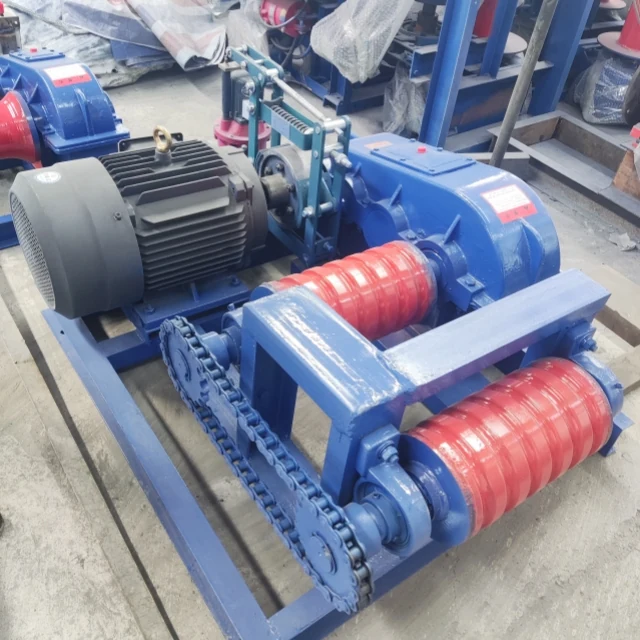Selecting the optimal winch isn’t just about load capacity—it’s about matching engineering features to your operational environment. Whether you’re managing heavy mining loads or precision bridge installations, the right winch improves safety, efficiency, and cost-effectiveness. This guide breaks down key technical considerations and industry-specific solutions to streamline your decision-making.
Winch Series and Their Engineering Characteristics
High-Speed vs. Slow-Speed: When to Prioritize Speed or Torque
High-speed winches excel in applications requiring rapid movement, like transporting materials across mining sites. However, slow-speed models deliver higher torque for controlled, heavy lifting—critical in metallurgy or hydroelectric dam maintenance.
Key Takeaway:
- High-speed: Choose for repetitive, time-sensitive tasks (e.g., ore transport).
- Slow-speed: Opt for precision-heavy operations (e.g., positioning turbine components).
Ever wondered why some industries prioritize torque over speed? It’s all about control versus urgency.
Speed-Adjustable Winches for Dynamic Work Environments
For tasks like bridge cable installation, speed-adjustable winches (like the JT series) offer game-changing flexibility. They allow operators to shift between rapid deployment and meticulous positioning, reducing project timelines by up to 70% compared to fixed-speed models.
Advantages:
- Adapt to changing load requirements mid-task.
- Minimize equipment swaps, lowering downtime.
Safety and Control in Hand-Operated Quick-Release Models
In construction, 2JKL hand-controlled winches meet stringent safety standards with features like:
- Worm gear systems: Prevent accidental load drops.
- Ergonomic handles: Reduce operator fatigue during prolonged use.
These models are ideal for scenarios requiring manual precision, such as aligning structural beams.
Industry-Specific Winch Solutions
Mining and Hydroelectric: Heavy-Duty Load Management
Mining winches must handle extreme loads (often 20–100 tons) while resisting wear. Electric models (like Garlway’s industrial series) outperform hydraulic alternatives with:
- Lower maintenance: Fewer moving parts reduce breakdowns.
- Corrosion-resistant coatings: Essential for damp hydroelectric environments.
Did you know? Electric winches can cut long-term costs by 30% due to reduced energy and maintenance needs.
Bridge Construction: Precision and Adaptability Requirements
Bridge projects demand winches that combine power with finesse. Key features include:
- Dynamic braking: Ensures stability when settling bridge segments.
- Multi-line spooling: Accommodates varying cable lengths for different phases.
Metallurgy and Chemicals: Corrosion Resistance and Stability
In corrosive environments (e.g., chemical plants), winches require:
- Stainless steel components: Resist acid and moisture damage.
- Explosion-proof motors: Mitigate ignition risks near volatile substances.
Conclusion: Matching Your Needs to the Right Winch
- Define priorities: Speed for productivity, torque for control, or adaptability for complex tasks.
- Evaluate environmental factors: Corrosion, temperature, and safety regulations.
- Consider long-term costs: Electric models often offer greater ROI through efficiency.
For industries relying on Garlway winches, the focus remains on durability, precision, and safety—ensuring your machinery aligns with both operational demands and budgetary goals.
Ready to optimize your winch setup? Start by auditing your most frequent tasks and environmental challenges.
Related Products
- Electric and Hydraulic Winch for Heavy Duty Applications
- Warn Winch Windlass Boat Trailer Winch
- Best 18000 Pound Drum Anchor Trailer Winch
- Ready Mixer Machine for Construction Ready Mix Machinery
- Electric Hoist Winch Boat Anchor Windlass for Marine Applications
Related Articles
- How Industry-Specific Electric Winch Configurations Boost Efficiency and Safety
- How Electric Winch Components Dictate Performance and Durability
- How to Choose and Optimize a Winch for Any Job: Power, Capacity, and Environment
- How to Extend Hydraulic Winch Lifespan with Preventive Maintenance and OEM Parts
- How Electric Winches’ Engineering Enhances Efficiency and Safety in Heavy-Duty Applications





















